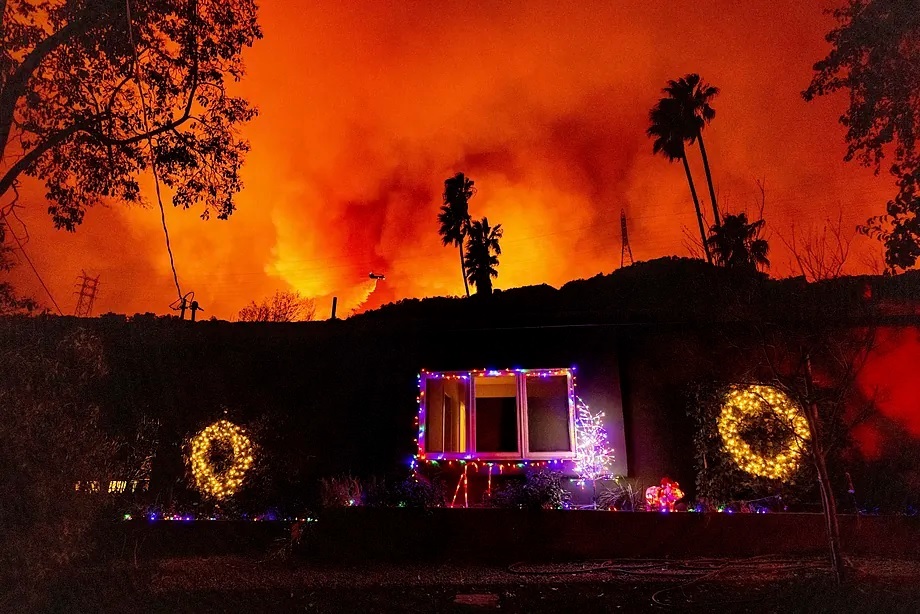The fires that broke out on January 7 in Los Angeles spread rapidly through the second-largest city in the US, fueled by strong Santa Ana mountain winds and extremely dry vegetation due to prolonged drought. These conditions, as indicated by a group of climate scientists on Tuesday, were 35% more likely due to man-made climate change.
This is the rapid analysis conducted by the World Weather Attribution (WWA), a group of experts that carry out attribution studies to determine if an extreme weather event has been influenced by climate change and, if so, to what extent. Nearly a hundred extreme events worldwide have been analyzed so far.
The Los Angeles fires started in different areas of this large city where many homes are surrounded by trees and vegetation, leading to the evacuation of many neighborhoods in a very short period of time due to the rapid spread of flames. Additionally, days after the initial wave of fires, new outbreaks occurred. Currently, there are 28 confirmed fatalities, while the number of destroyed homes is estimated to be around 10,000. Millions of people have been exposed to toxic smoke for weeks from these fires, considered the most devastating in Los Angeles history.
According to this analysis by the World Weather Attribution conducted by around thirty scientists, including fire specialists from the US and Europe, climate change increased the likelihood of wildfires in this US city and worsened their impact by reducing rainfall, drying vegetation, and increasing the overlap between flammable drought conditions and strong Santa Ana winds. They state that the warming caused by burning fossil fuels made those conditions of heat, dryness, and wind 35% more likely.
Furthermore, they conclude that the scarcity of rainfall from October to December is now 2.4 times more likely compared to the climate before the industrial era began.
Historically, rainfall from October to December used to mark the end of the wildfire season in California, but in recent decades, this rainfall has decreased. Higher temperatures cause more moisture to evaporate from plants, making them more prone to burning. The drier and more flammable conditions that persist for longer increase the likelihood of a wildfire occurring during the peak of the Santa Ana winds in December and January, according to scientists.
All of this is leading to the wildfire season in Los Angeles becoming longer and more dangerous. According to their analysis, fire-prone conditions have extended by an average of about 23 days each year in California, increasing the likelihood of a fire starting during the peak Santa Ana winds. Additionally, due to the great variability in precipitation, there are years when drought conditions can last much longer.
In their analysis, they also highlight how the water infrastructure in this Californian city, not designed to combat a rapidly spreading wildfire, was unable to meet the extreme needs during the Eaton and Palisades fires.
This occurred despite California being accustomed to dealing with wildfires. The simultaneous occurrence of two major fires, driven by hurricane-force Santa Ana winds in urban areas, "created chaotic and unpredictable conditions" for firefighters, as noted by the scientists. Among their recommendations, they propose "improving the capacity of the water system" and early warning systems, as 17 of the 28 deaths occurred in West Altadena, a neighborhood where evacuation alerts arrived later than in other affected areas.
